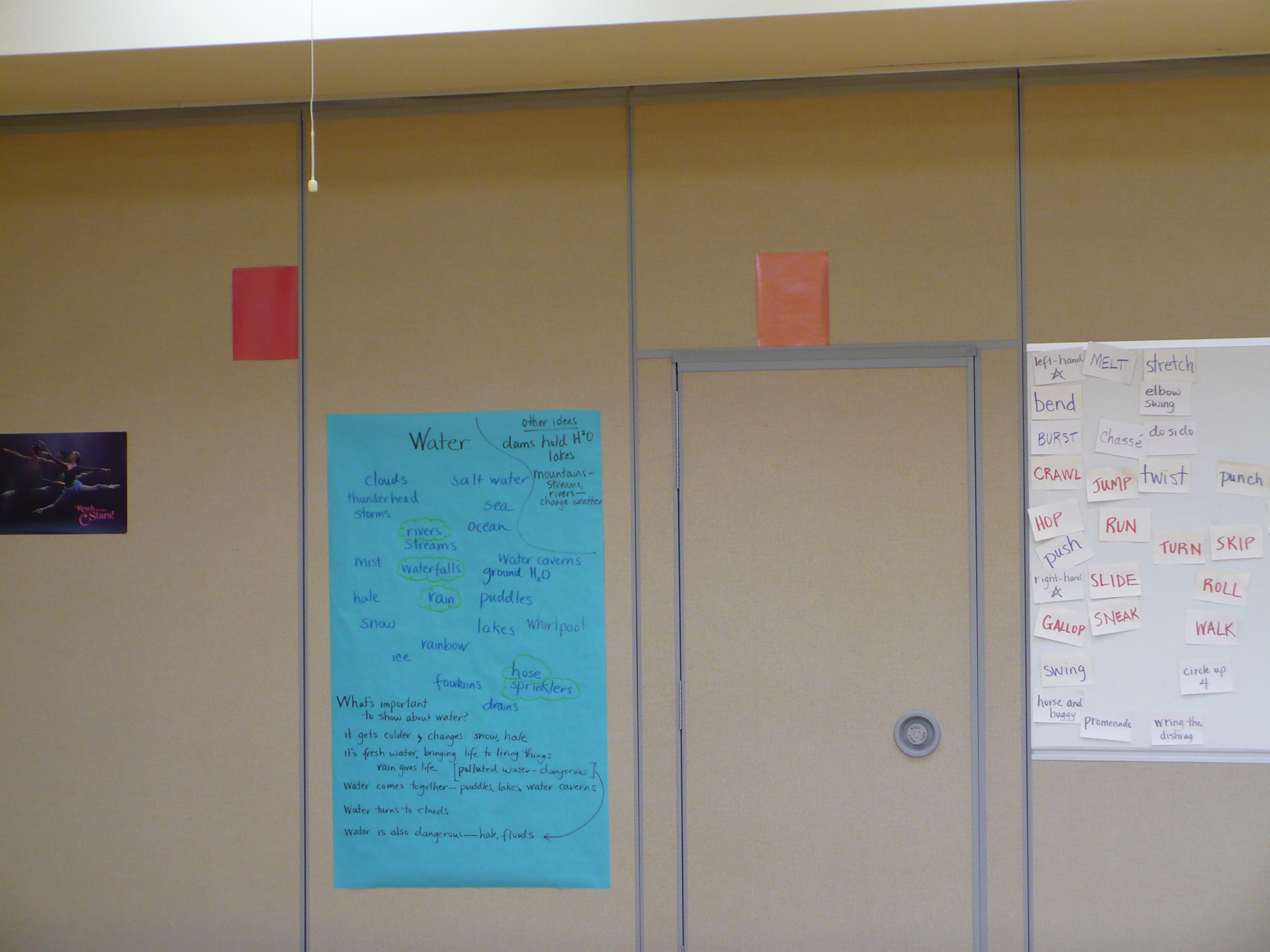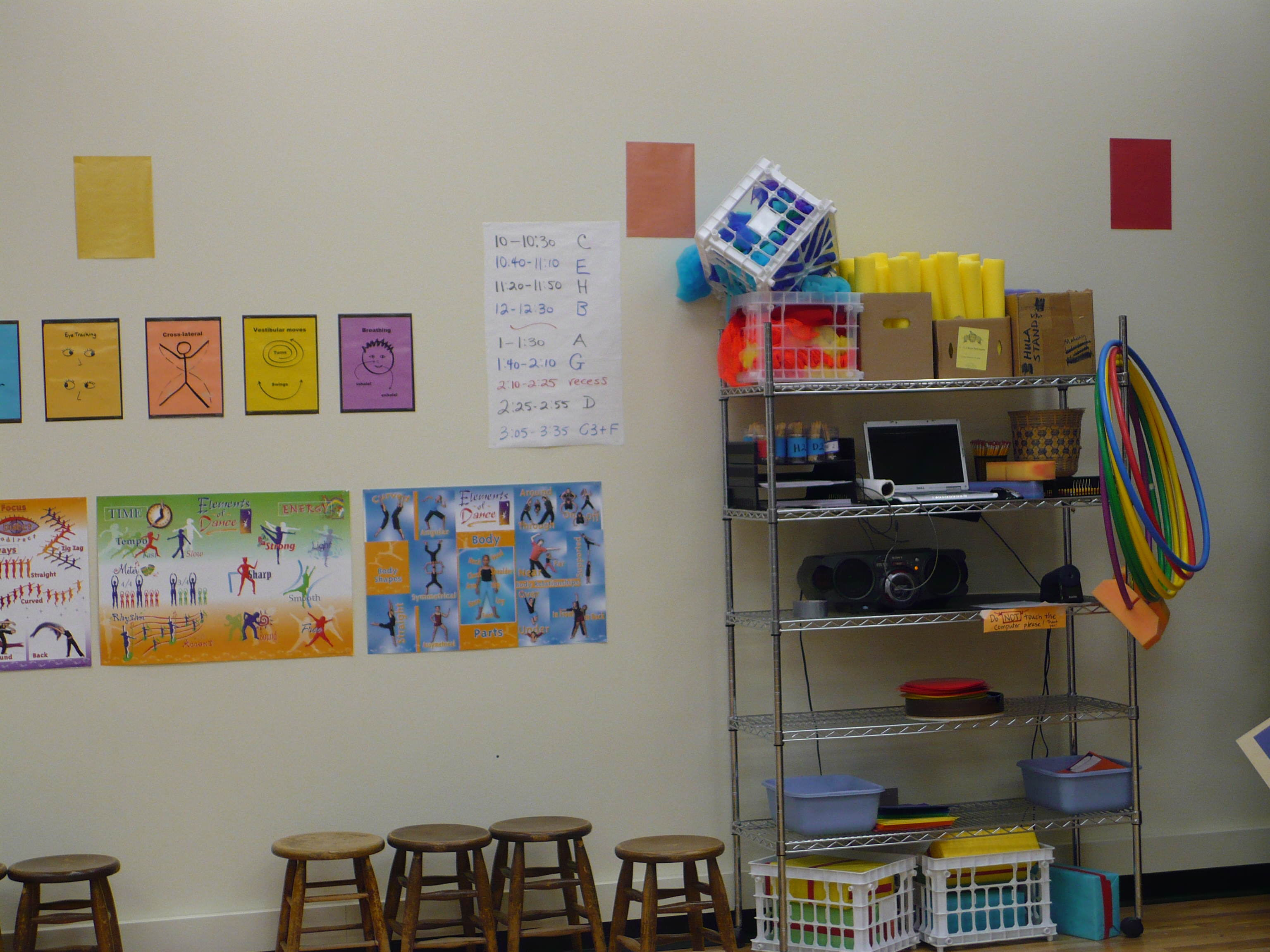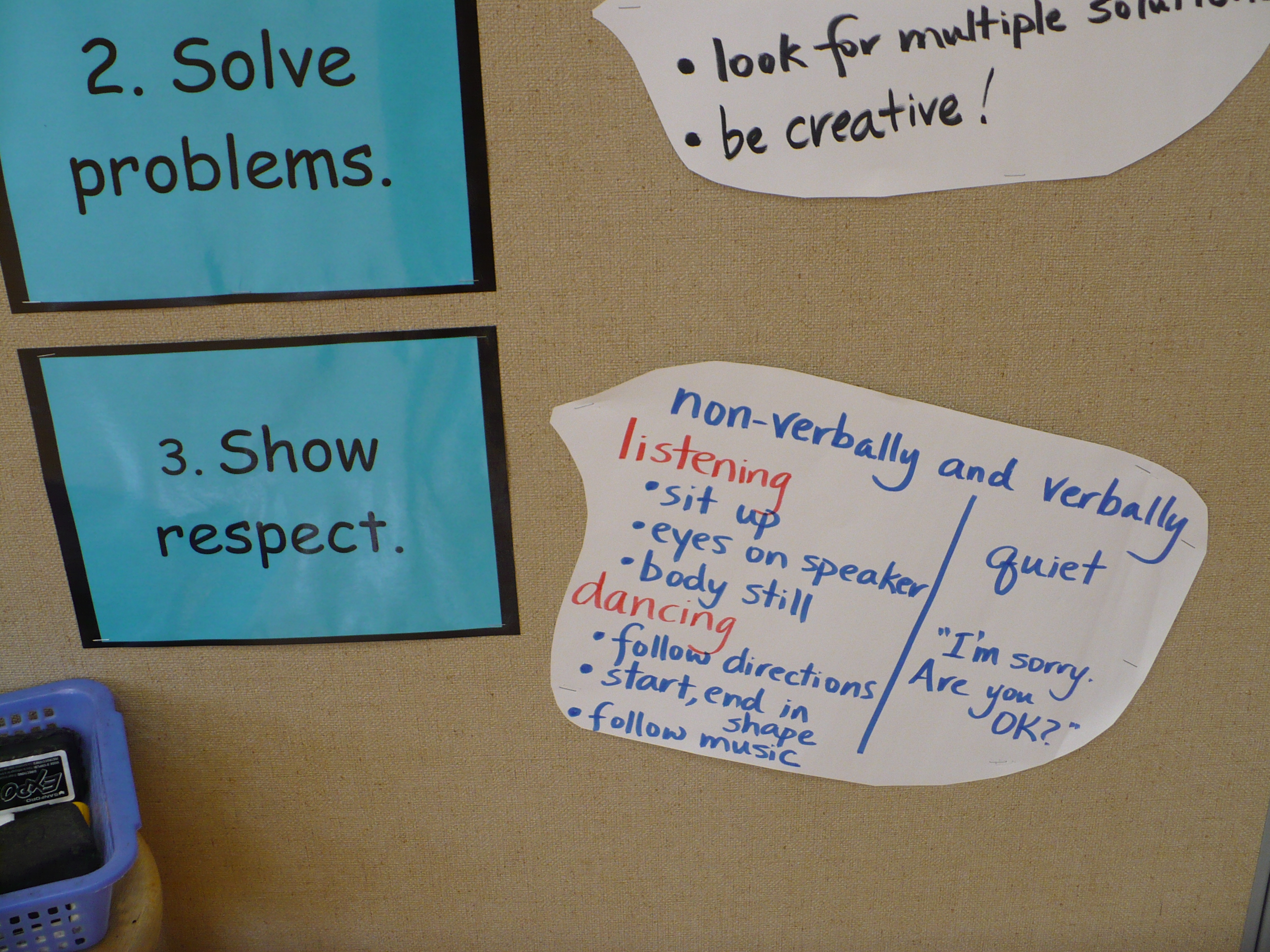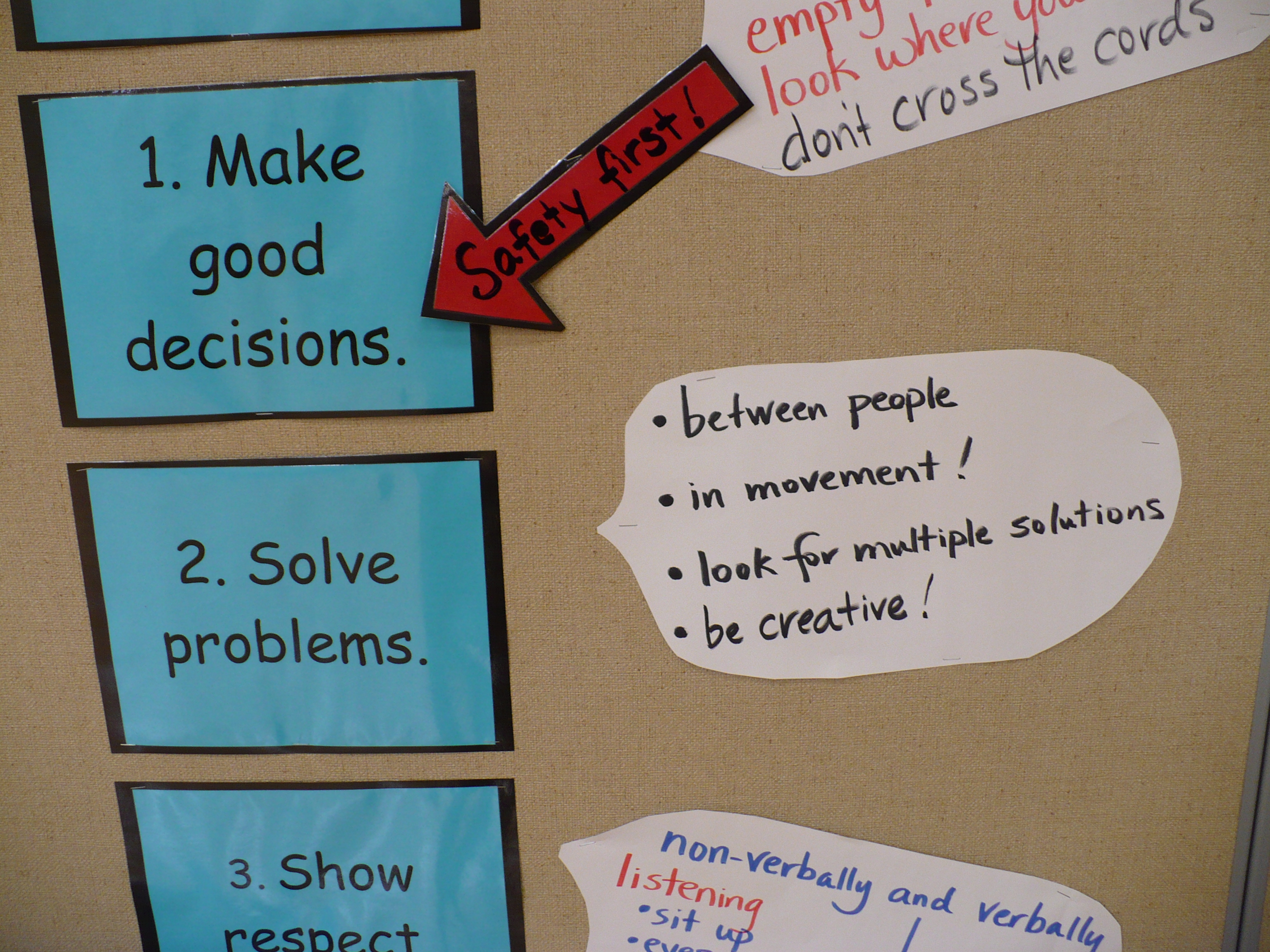Grades: 1st-5th grades
Teaching points: The dance classroom has standards: Make good decisions. Show respect. Solve problems. [These are school-wide standards.]
Targets:
- Understand & practice the nitty gritty: standards, routines & procedures for dance class;
- Get moving!
Context: Just now it’s no longer the first week of school, but the first week of school comes along every year, so let’s pretend we’re back there & get it down. At the beginning, there are some necessary basics that have to be covered: clothing requirements, safety issues, fire & earthquake drills & expectations.
Lesson 1 : Dancers make good decisions, with safety first.
- Assign each student a home spot [I use “color groups,” with 4-5 student locations on each of six imaginary colored lines, the ends of which are marked by colored rectangles on opposite walls; each student has a position within a color group, and at the start of each week the front person rotates to the back of the line].

Red & orange rectangles mark the north ends of 2 invisible lines

Red, orange & yellow rectangles mark the opposite ends of invisible lines
- Create a t-chart (what do safe decisions look like & sound like?).
- Outline basic safety rules, including clothing issues (shoes, sox, long saggy pants) & dancing without physical contact (aim for the empty space!).
- Choose 3-5 locomotor/nonlocomotor cards from 15 posted on the white board & make a sequence, 8 counts each… perform safely [adapt for primary & intermediate by varying the number of cards].
- Individual students create their own phrase by changing 1 or more of the movements from the modeled sequence… perform safely.
- 5th grade: Learn self space moves for PataPata or another line dance with a repetitive pattern (e.g., The Hustle)
- Outline procedures for sitting together by the document camera (choose your neighbors wisely, focus on learning).
- Review safety points; outline safe dismissal & lining up.

Details for "Make good decisions"
Lesson 2: Dancers show respect, verbally & non-verbally.
- Post an “Instant Activity” at the door. Primary: Do a sitting “hook-up.” Intermediate: Do the phrase stretch, run, skip (8 counts each) three times, keeping space between yourself & other dancers & sit down.
- Define verbally & non-verbally. Do a t-chart on showing respect during both listening & dancing. Non-verbally is what it looks like; verbally is what it sounds like.
- Respect the cues while dancing… As a class, choose 4 new locomotor/nonlocomotor word cards & put them in sequence. Practice with drum cues; practice with musical starts & pauses.
- Intermediate: Learn PataPata & alternate the basic moves with the practiced sequence.
- Review aspects of showing respect.

Details for "Show Respect"
Lesson 3: Dancers solve problems.
- “Instant Activity”… primary students do a lying-down hook-up; intermediate students take their places.
- Talk through solving problems on the behavioral level: solutions for when someone is talking to you, when you want the same prop as another dancer, when people bump…
- Solve some dance problems. Primary — Problem 1: Control your body in self & general space, using a range of movements in both. Problem 2: Think of some new ways to move [mirror the teacher in self space, alternate by creating never-before moves in general space individually]. Problem 3: Can you return to a partner in 16 counts & take turns? One partner holds a location, while the other partner travels & returns. Intermediate — Solve some dance problems. Problem 1: Control your body in self & general space, using a range of movements both on location & traveling. Problem 2: Choreograph a sequence in a duet [choose 4 moves, put them in order, 8 counts each, include both self & general space]. Problem 3: Use your own phrase in alternation with the PataPata moves (do PataPata sequence 4 times; alternate with 32-count choreographed unison duet).

Details for "Solve Problems"
Lesson 4: Emergency Drill procedures have to be inserted somewhere during the first week. Cover them, practice them & then repeat whatever dance structure was most fun & successful — the one they’re asking for!
An aside: As the year begins, safety & management guidelines are the first priority. I teach students from kindergarten through 5th grade, so many have already been with me. However, every class has kids who are totally new to the school & dance, so expectations need to be clearly stated. By using word cards, it’s easy & quick to get moving, I can assess locomotor/nonlocomotor ability, the kids are doing the choosing, & choreograhy — making up their own sequences & dances — starts right away.
I want to quote your post in my blog. It can?
And you et an account on Twitter?
Lesson plan: Let’s do an improvisation! // Jan 2, 2010 at 10:05 pm
[…] & improve. Dancers reflect (think back) on their dancing. [Timing for this lesson: just after the basics for dance classes are […]
Of course, feel free to quote me. I don’t have an account on Twitter.